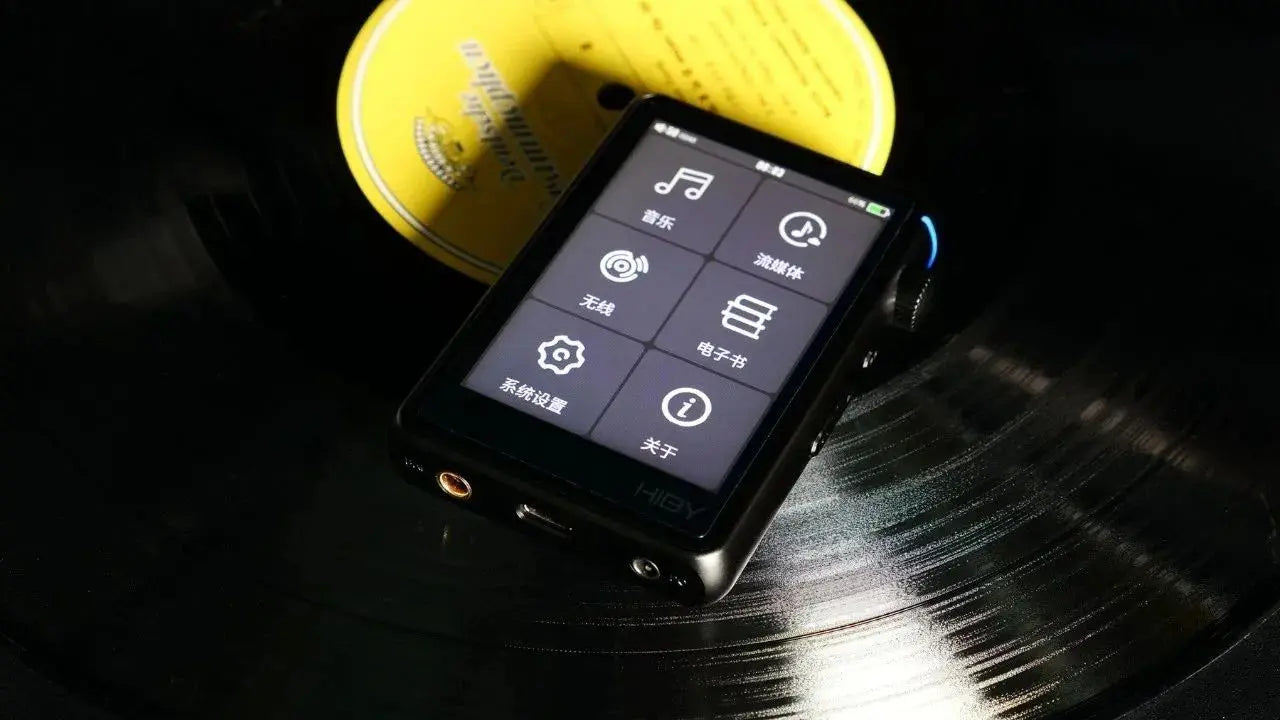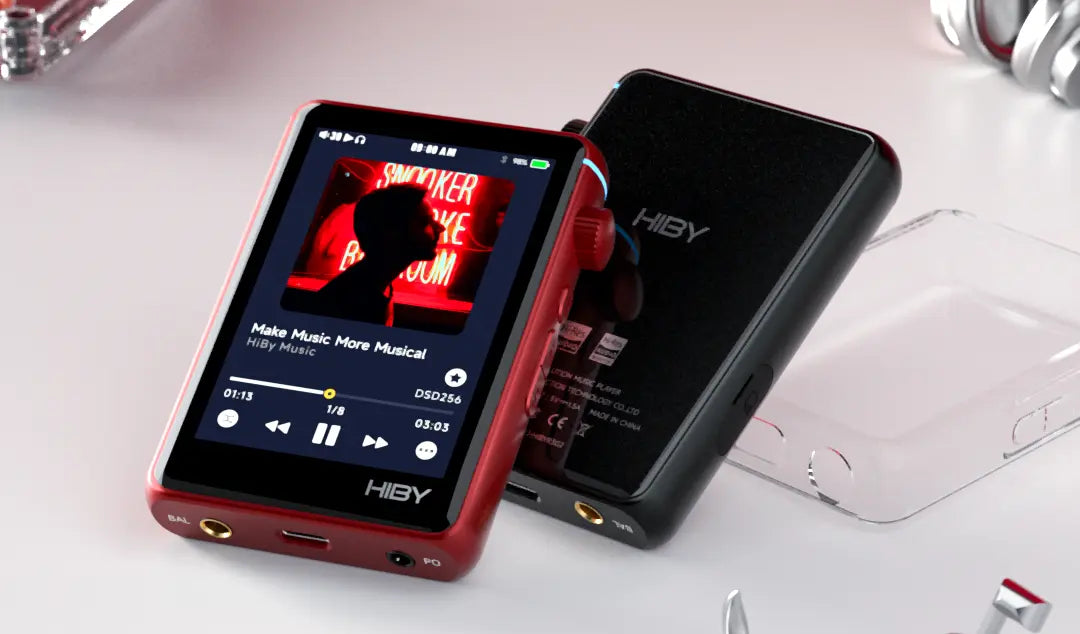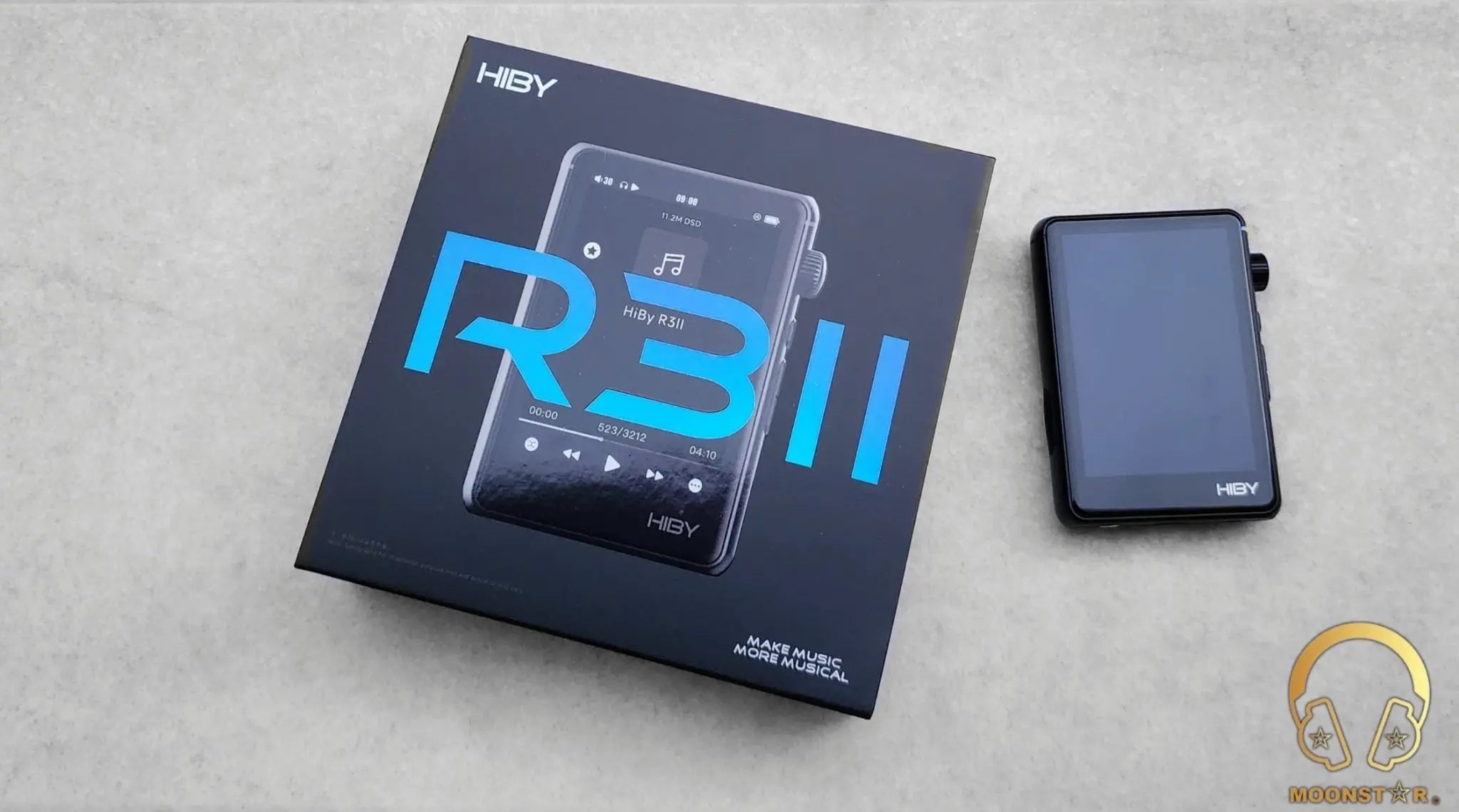Original Title:
HiBy R3 II Generation, a portable MP3 player that may perhaps be called the ultimate small brick in the future.

As the second generation of HiBy R3, a new-generation small brick under the HiBy brand, it had relatively little early promotion. However, its sudden listing at a price of 998 yuan undoubtedly gave many people a little surprise.
The reason why I didn't say it was a big surprise is because small bricks— or rather, small audio players, small MP3 devices, are quite obviously part of the niche toy category in the current year of 2023. Moreover, compared to high-end audio bricks that also cater to niche markets but start at tens of thousands of yuan, these small gadgets suffer from limited performance due to price constraints, and profits are razor-thin. In other words, selling a dozen of these may not match the profit of a single high-end audio player worth tens of thousands. Enthusiasts also have limited interest in such products, as they often possess more expensive options. Therefore, news about these products doesn't usually make big waves.
However, in my view, small bricks are a product line that every audio player manufacturer should always pay attention to because their user base naturally possesses a tremendous degree of elasticity. If there is another explosive growth in demand one day, and you haven't laid any groundwork early on or if you think it's not profitable and discard this product line, you'll only be left regretting your decision.

Because things like point-and-shoot cameras and MP3 players, which have singular functions, had already established their presence and functional attributes in the minds of consumers more than a decade or two ago. The former was used for taking quick photos, and the latter was used for plugging in headphones and listening to music. Everyone knew what they were for and considered them uncomplicated. Of course, you might argue that with the strong cameras on smartphones and the popularity of wireless earbuds, theoretically, point-and-shoot cameras and MP3 players should be obsolete, right? Well, take a look at the overwhelming presence of 'CCD cameras' on platforms like Little Red Book, or the sudden trend of people using wired headphones to take photos. It's quite strange, isn't it?
So, let's ponder this calmly: could it be that one day, carrying a clearly non-smartphone gadget and listening to music with wired headphones becomes a street fashion trend again? It's not difficult to imagine—or perhaps by this point, you've already made the same judgment as I have, believing that this phenomenon is inevitable in the future, with the only uncertainty being the specific timing and how this trend will be named.
Trends are cyclical, after all, and small brick devices, or small MP3 players, may endure. Given how humans have a knack for embracing nostalgia and going retro in inexplicable ways, it's likely that there will be a resurgence one day.

Moreover, over the years, small brick devices have managed to retain some customer groups. For instance, some people who initially purchased wired headphones may feel that small brick devices offer better sound quality assurance than smartphones, leading them to make a choice between the two. Others may perceive wired headphones as e-books and small brick devices as physical books (some individuals do indeed feel this way, as standalone audio players provide a more tangible and historical experience, which could be a selling point for future success). Additionally, some people's usage environments may not be suitable for listening to music on a smartphone. Their parents might not want to give them a phone but would be willing to buy them a small device solely for music enjoyment. Or perhaps some individuals simply enjoy plugging in an MP3 player into their home speakers or using it in their cars?
In summary, the lifestyle of small brick devices over the past decade and a half cannot be compared to the era of widespread MP3 usage from over a decade ago. These devices have survived in the midst of changing trends, with their core customer base primarily consisting of entry-level enthusiasts, making do with limited growth opportunities. Fortunately, not only has technology advanced, but during this development process, various manufacturers have also explored their unique strategies, with HiBy being a notable example.

HiBy's definition of small brick devices can be summarized in about twelve words: "Eager for excellence, compact yet powerful, refined and iterative."
Firstly, let's discuss "Eager for excellence":
For a small brick device priced around a thousand yuan, people with some knowledge would generally dismiss the idea of streaming media services. Playing services like Netease Cloud Music or QQ Music typically requires a budget of over two thousand yuan. Requesting such features for a thousand yuan device might seem unreasonable. However, apart from this, consumers expect at least two headphone jacks – one single-ended and one balanced. They also expect the device to deliver sound quality that justifies its price, offering advantages over a smartphone paired with a cheap accessory. In addition, consumers demand stable operation, an attractive design, and good battery life. That should cover most of the essentials, right?
The HiBy R3 2nd Generation certainly meets these criteria. However, if they were to stop at these features, they wouldn't truly embody the essence of HiBy. It seems like these engineers with backgrounds in science and engineering don't quite understand the concept of "precision" or "tiered supply." Instead, they strive to provide everything that the HiBy system can offer in terms of software and hardware. This includes, but is not limited to:

It supports bidirectional Bluetooth, allowing you to connect Bluetooth headphones (with AptX and LDAC support when connected to Bluetooth headphones, which is excellent). What's even more important is that you can use HiByLink to connect to a smartphone and use it as a "Bluetooth portable decoding headphone amplifier." In other words, you can stream music from your smartphone to it via Bluetooth, and then use wired headphones. This is essentially close to having streaming media functionality; it's just a brief detour through your smartphone.
Additionally, this device indeed has streaming media capabilities (quite impressive, to be honest), albeit with support for slightly less mainstream services such as TIDAL, Qobuz, and Sony's selection. It also features internet radio functionality when connected to Wi-Fi, and you can transfer songs via Wi-Fi. It even supports Airplay—I effortlessly connected it to my Apple device, and playing songs from my iPhone over the air was a breeze!
Of course, you can also connect it to your computer and use it as a decoding headphone amplifier or an external sound card. After all, except for Apple, most Windows computers have headphone jacks, but the sound quality is often unbearable (onboard sound cards lack power and sound quality, a problem that has persisted for decades). This additional feature is quite practical.

The biggest competitor for small brick devices, as I mentioned earlier, is the small tail (smartphone). Both are devices with headphone jacks, but the small tail is relatively more compact and convenient for selecting songs with a smartphone. The HiBy R3 2nd Generation addresses this by saying, "Well, that's easy—I can do that too! I can also directly connect to your smartphone and serve as a small tail. And guess what? I have my own battery, so I won't drain your phone's battery. Plus, I eliminate the problem of your phone's charging port not providing enough power. How's that for a solution?"
It features Line OUT functionality, allowing you to connect it to a separate headphone amplifier as a digital source.
Additionally, this gadget also has an e-book function. This feature has been around since previous generations and has been retained. It can make those born in the 1980s fondly recall their youth, sneaking a peek at e-books in the classroom using MP4 and PSP devices some twenty years ago...

So, really... aside from not being able to play videos (come on, why would you want to watch videos on such a small screen! Let's not dwell on what Newman MP3 players, Cang Lao Shi, and Song Lao Shi were from twenty years ago—I don't remember any of that!), it has covered audio functionalities comprehensively. In fact, you could say that if you're a newcomer just starting to get interested in HiFi headphones, this player is practically a textbook. It can teach you what wired rotary functionality is and how it's different from wireless rotary functionality. It can explain what a USB DAC is and what a Bluetooth decoding headphone amplifier is. It's essentially an all-in-one coaching device that can help you grasp many concepts in a very tangible way before you take off in your J-20 fighter jet.
 Second, Compact yet Powerful:
Second, Compact yet Powerful:
As mentioned earlier, the small brick device's primary competitor is the small tail (smartphone). One significant disadvantage of the small tail is that it cannot draw power from the smartphone as freely as it would like, given that each smartphone manufacturer has its own rules and restrictions on power usage. This results in a strict upper limit on battery life for small tails, regardless of how expensive they may be. This limitation is especially pronounced for Apple devices, which impose stringent power constraints. On the other hand, the HiBy R3 series of small brick devices, spanning several generations, has a distinct characteristic: it aims to provide as much power as possible despite its small size.
In the case of the R3 2nd Generation, it offers two gain settings, with the low gain setting being sufficient for the vast majority of in-ear monitors (IEMs) and earphones. Whether it's my frequently used FW1800, the DUNU SA6 2nd Generation, or HiBy's own ZETA, these common dynamic drivers, balanced armatures, and hybrid IEMs all receive ample sound pressure and exhibit plenty of energy with the low gain setting. If you find that the soundstage or resolution is not as expansive as you'd like and switch to high gain, you'll discover that the issue doesn't lie there. It's just that the audio quality of a thousand-yuan player has its limitations, but it's not an issue of insufficient power output. Its 3.5mm and 4.4mm headphone outputs both offer robust power output and can deliver up to 380mW of power at 32Ω, making it a veritable powerhouse among small brick devices.
In the realm of over-ear headphones, it handles most easy-to-drive low-impedance headphones quite well. During the early days of the rise of Chinese brick-shaped portable players, it could match the driving capabilities of some early to mid-tier products in the three to four-thousand-yuan range. For high-impedance headphones, I tested it with the HD660S2. If it couldn't drive them adequately, there was no workaround with the high gain setting either. The framework and dynamics as a whole could not be sustained—driving a 300-ohm over-ear headphone with a thousand-yuan small brick player just wouldn't make sense. So, considering its size and price, its driving capability is already quite impressive. Given the objective limitations, it can handle the vast majority of IEMs and some low-impedance over-ear headphones. In any case, this level of performance is more than satisfactory.

In terms of sound characteristics, the HiBy R3 2nd Generation exhibits a slight emphasis on the lower frequencies. The low-frequency performance is exceptionally stable, making it undoubtedly the most solid lower end I've heard in Chinese portable players within the thousand-yuan range. It delivers thickness and density, allowing instruments like the cello to showcase textured articulation, and even conveying a sense of air vibration. Such a well-rounded lower frequency response is challenging for small tails in this price range to match, and TWS earbuds at this price point are even further from consideration. The midrange is robust, full-bodied, and possesses resilience, accentuating a sense of flesh and richness with corresponding smoothness. The high frequencies are not piercing but offer excellent extension, spaciousness, and detail retrieval. Additionally, this little device boasts a wide horizontal soundstage and significant vertical scale, providing the best soundstage expression you can imagine within this price range.

In terms of tonality, it leans slightly towards a warmer and thicker sound. It prefers to offer a sense of grandeur and realism in thunderous moments, even if it means sacrificing some of the delicate nuances like raindrops on leaves. However, don't mistake it for a "HuFi" (overly warm and veiled) device. In the past, budget machines were forced to choose between warmth, finesse, and neutrality. But with the support of the dual ES9219C DACs and the addition of high-end features like independent audio clocks, newer small brick devices like the HiBy R3 2nd Generation have a high starting point in terms of basic audio quality, including separation. Adding a bit of thickness and harmonics makes it sound more substantial, providing confidence within its compact form factor, without sacrificing detail or dynamics.
Its dynamic range and background noise levels are quite impressive, and it handles content with ease while maintaining a balanced tonality. It has a poised tonal balance, making it stand confidently against its predecessors in this price range. Compared to other devices in its class, it maintains a consistent performance level.
Third,Refined and Iterative:
Speaking of refinement, the first thing that deserves praise is the scroll wheel on this device. I must say, I'm truly enamored with its tactile feedback, whether it's the reassuring clicks when pressing it down or the smooth scrolling action—it's a top-notch component. I never thought a thousand-yuan player could have such a delightful scroll wheel.

And the scientific nature of the menu, the responsiveness when swiping left and right on the screen—these details have been evolving step by step at HiBy. I'm not adept at describing the intricacies of a system, but during my days of using the R3 2nd Generation, I could clearly feel that it's significantly more user-friendly than the previous R3 models. Many details are more logically designed and offer more direct feedback. Perhaps some users might find it a bit challenging to adapt to initially, but truth be told, this is already one of the most user-friendly systems on a music player. If you're looking for something even more user-friendly, you might as well ask Tim Cook to create a dedicated audio player for you.
This includes features like adjusting sound with MSEB and digital filters, which have been refined and inherited from one generation to the next. The richness in terms of functionalities has actually exceeded the needs of most users. I believe that over 95% of users won't fully utilize all the features of this device. But that's okay, HiBy has given you plenty to explore, and having more options is always better than having fewer.

I still have some supplementary recommendations for HiBy.
1. While the three color options for the R3 2nd Generation look appealing, and the overall design is understated and attractive, the lighting effects are just right, and the included silicone case feels of good quality, I'd like to suggest that even for an entry-level product, HiBy could consider offering more "trendy" cases. The material can vary, and collaborating with interesting designers might be a good idea (perhaps even collaborating on customized versions of the OS interface). Because these types of products already have a toy-like quality, it's important not to view them too narrowly from a technical perspective. Adding some stylish accessories could potentially help it gain more popularity, right?
2. I noticed that some users complained about the low screen resolution. Personally, I believe that many people initially expected this device to be priced around 1,000 yuan, so when they saw the actual price of 998 yuan, they probably decided not to bring up this complaint (which is exactly what I mentioned at the beginning, that it took them by surprise). Moreover, as someone who has used it extensively for several days, I can confidently say that the screen resolution is not an issue; it's more than sufficient.
3.HiBy previously used a 3.5mm + 2.5mm balanced port configuration. In recent years, the 2.5mm port has become less common, and the R3 2nd Generation has timely switched to a 3.5mm + 4.4mm balanced port configuration. In fact, just for this reason alone, it's essential to stay up to date with iterative improvements, and the timing of the release was perfect.

4. DSD256 hardware decoding, PCM384kHz/32bit, MQA 16X, and dual Hi-Res certifications are all the extra goodies that HiBy generously provides, and I didn't even have to guess that.
In summary, the HiBy R3 2nd Generation is a small brick that offers nearly everything you could ask for in terms of functionality. It may be small, but it packs a punch in terms of power, and its audio quality is unquestionably great. With a refined and iterative user experience, it's available at the incredibly affordable price of just 998 yuan. It's suitable for entry-level audiophiles looking to explore a new world, versatile for various usage scenarios, and makes for a great gift for friends and family.

And what I'm pondering right now is: When the world once again sees a reversal of trends in a niche domain, will this device shine brightly in the eyes of the enthusiasts and be hailed as the "ultimate small brick of the previous MP3 era"?
You see, it certainly has the potential for that...





